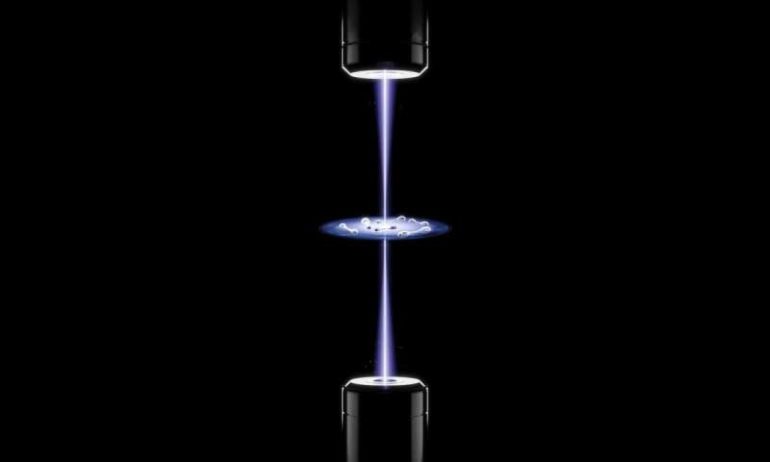Phase transitions describe dramatic changes in properties of a macroscopic system—like the transition from a liquid to a gas. Starting from individual ultracold atoms, Heidelberg University physicists were able to observe the emergence of such a transition with an increasing number of particles. The research work was carried out in the field of quantum physics under the direction of Prof. Dr. Selim Jochim from the Institute for Physics.
In order to formulate effective theories in physics, microscopic details are set aside in favor of macroscopically observable quantities. A cup of water can be described by properties like pressure, temperature and density of the fluid, whereas the position and velocity of the individual water molecules are irrelevant. A phase transition describes the change of a macroscopic system from one state of matter, like fluid, to a different state of matter, like gaseous. The properties of macroscopic systems—so-called many-body systems—can be described as emergent because they result from the interaction of individual components which themselves do not possess these properties.
“I have long been interested in how this dramatic macroscopic change at a phase transition emerges from the microscopic description,” states Selim Jochim. To answer this question, the researchers designed an experiment in which they assembled a system from individual ultracold atoms. Using this quantum simulator, they investigated how collective behavior arises in a microscopic system. To this end, they trapped up to twelve atoms in a tightly focused laser beam. In this artificial system it is possible to continuously tune the interaction strength between the atoms from non-interacting to being the largest energy scale in the system. “On the one hand, the number of particles in the system is small enough to describe the system microscopically. On the other hand, collective effects are already evident,” explains Luca Bayha, a postdoc in Prof. Jochim’s team.
In their experiment, the Heidelberg physicists configured the quantum simulator such that the atoms attract one another, and if the attraction is strong enough, form pairs. These pairs of atoms are the necessary ingredient for a phase transition to a superfluid—a state in which the particles flow without friction. The current experiments focused on when the pair formation emerges as a function of the interaction strength and the particle number. “The surprising result of our experiment is that only six atoms show all the signatures of a phase transition expected for a many-particle system,” adds Marvin Holten, a doctoral student in Prof. Jochim’s group.
Ultracold quantum particles break classical symmetry
More information:
Luca Bayha et al, Observing the emergence of a quantum phase transition shell by shell, Nature (2020). DOI: 10.1038/s41586-020-2936-y
Provided by
Heidelberg University
Citation:
Physicists observe the emergence of collective behaviour (2020, December 11)
retrieved 13 December 2020
from https://phys.org/news/2020-12-physicists-emergence-behaviour.html
This document is subject to copyright. Apart from any fair dealing for the purpose of private study or research, no
part may be reproduced without the written permission. The content is provided for information purposes only.



